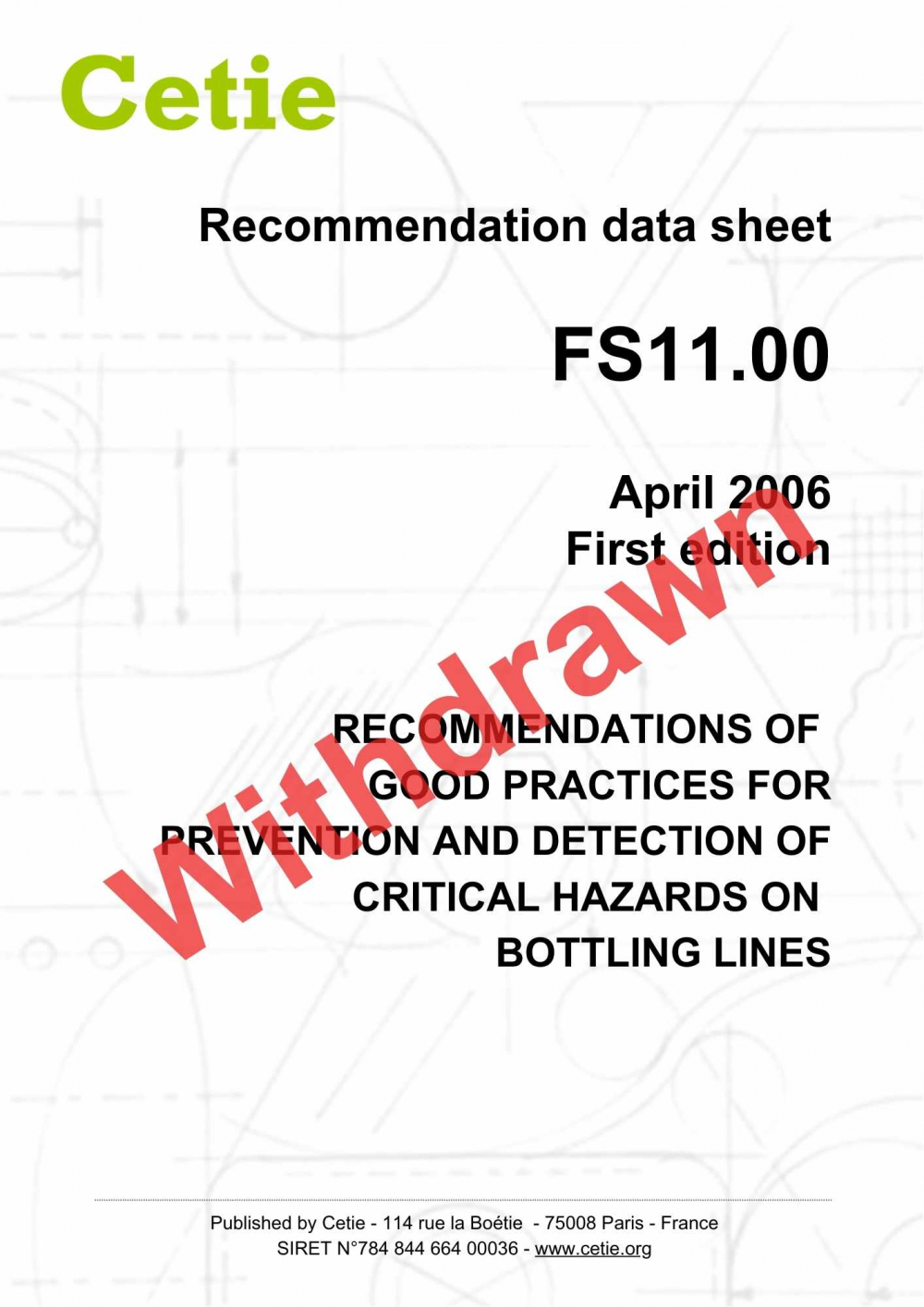FS11.00
First edition
Published on: 02/10/2023
Recommendations of good practices for prevention and detection of critical hazards on bottling lines
Scope of application
Critical hazard: either a biological, chemical or physical agent in the product or condition of the product, which has the potential to create an adverse health effect or unsafe conditions for individuals consuming, producing or handling the product.
Table of contents
Definitions
Short list of the main critical hazards
Prevention of critical hazards - Actions
Detection of critical hazards
Short list of the main critical hazards
Prevention of critical hazards - Actions
Detection of critical hazards
History
First edition: 04/2006
Document suppressed on 09/2023
First edition: 04/2006
Document suppressed on 09/2023
Contributors
AH CONSULT, ARDAGH, BA GLASS, BRITISH GLASS, BUNDESVERBAND GLASINDUSTRIE E.V. (Federal Association of the German Glass Industry), ENCIRC GLASS, GERRESHEIMER, HEINZ GLAS, O-I MANUFACTURING, SAVERGLASS, STOELZLE, VERALLIA, VETROPACK, VIDRALA, WIEGAND-GLASHUTTENWERKE
Document under responsibility of working group:
Glass wg1+4
WG chair: Arnaud JANIN - VERALLIA FRANCE
This permanent group is dedicated to a wide range of topics downstream of the production of glass bottles and jars dedicated to the food and beverage industries:
- Surface treatments, marking, labelling;
- Testing methods (impact, headspace, internal pressure, etc.);
- Nomenclatures (of finishes, jars, bottles, and visual defects, etc.);
- Quality management (food and beverage safety, best practices, regulations).
Document suppressed from library
